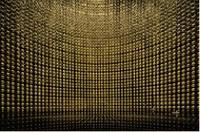 If something can’t be detected, can we actually say it exists? This was
the conundrum facing Wolfgang Pauli when he proposed that a neutral
particle (i.e. the neutrino) is emitted in the beta decay of a nucleus.
While it solved some profound mysteries, it was soon suggested that such
a particle would be impossible to detect. Nearly a century later, we
not only have detected neutrinos, but understand that they come in
three species, have antimatter counterparts, and that they play a
crucial role as fundamental building blocks of the Universe and in
determining its structure. I will discuss how neutrino oscillations, the
transmutation of the neutrino among its three species, have uncovered
some of its fundamental properties (such as the fact that it has a tiny
but non-zero mass). Befitting its history, these studies have answered
some questions about neutrinos but the answers are bizarre and raise new
questions. In the near future, we hope to understand the relationship
between the neutrino and antineutrino, which may provide critical clues
in the continuing paradox of how the universe came to be dominated by
matter.
If something can’t be detected, can we actually say it exists? This was
the conundrum facing Wolfgang Pauli when he proposed that a neutral
particle (i.e. the neutrino) is emitted in the beta decay of a nucleus.
While it solved some profound mysteries, it was soon suggested that such
a particle would be impossible to detect. Nearly a century later, we
not only have detected neutrinos, but understand that they come in
three species, have antimatter counterparts, and that they play a
crucial role as fundamental building blocks of the Universe and in
determining its structure. I will discuss how neutrino oscillations, the
transmutation of the neutrino among its three species, have uncovered
some of its fundamental properties (such as the fact that it has a tiny
but non-zero mass). Befitting its history, these studies have answered
some questions about neutrinos but the answers are bizarre and raise new
questions. In the near future, we hope to understand the relationship
between the neutrino and antineutrino, which may provide critical clues
in the continuing paradox of how the universe came to be dominated by
matter.
Department of Physics
What can we help you find?

